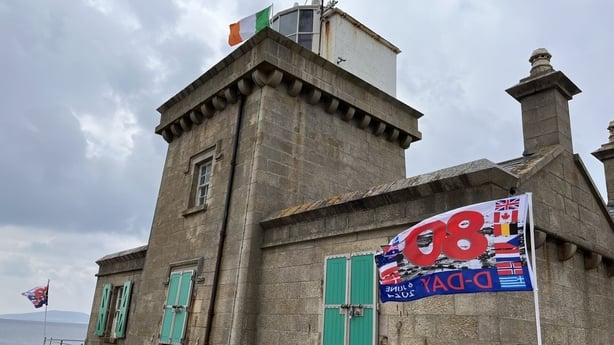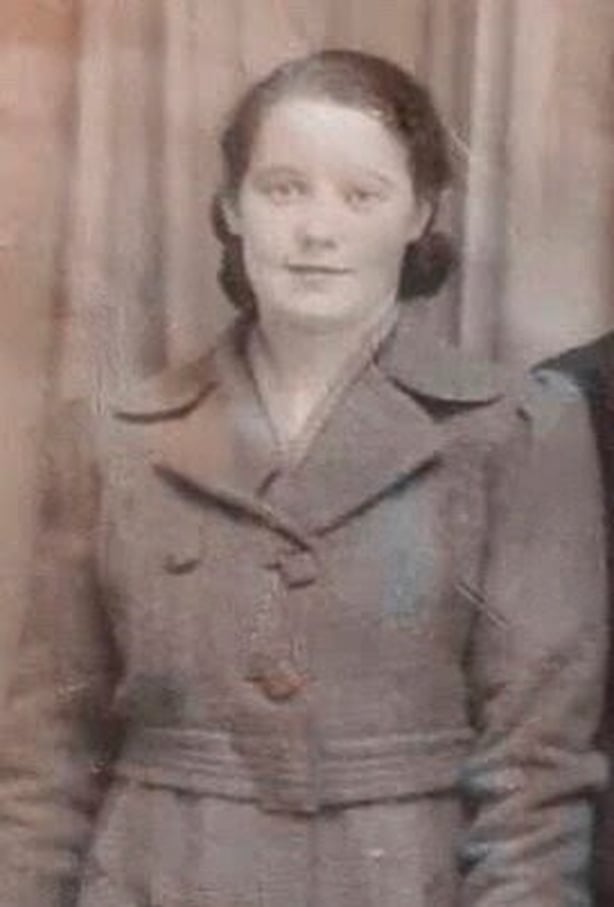As world leaders and veterans meet in Normandy to mark the 80th anniversary of the 6 June 1944 D-Day landings, a series of events are taking place in An Fód Dubh, Co Mayo to remember the invasion.
Maureen Sweeney forecast an impending storm from a lighthouse and coastguard station in An Fód Dubh in 1944, which changed the timing of the D-Day landings and ultimately secured victory for the Allies.
At 1pm on 3 June 1944, the then 21-year-old was first to forecast a severe Atlantic storm, which gave the Allies a two-day warning of stormy conditions in western Europe, forcing General Dwight D Eisenhower to delay his planned invasion of Normandy until 6 June.
It would be over a decade before the Sweeneys learned of the crucial role she played in turning the tide of World War II against Adolf Hitler and helping to defeat the Nazi forces.

In June 2021, Mrs Sweeney received a special US House of Representatives honour acknowledging her role.
She died in December 2023 aged 100.
The remote lighthouse in An Fód Dubh was home to her family for two generations.
The family is showcasing a series of exhibits at the lighthouse to explain the roles played during the war by Met Éireann and An Post.
There will also be guest talks by US Army veteran Ron Howko and retired Irish Defence Forces officer Donal Buckley.
Mrs Sweeney's grandson Fergus Sweeney said his grandmother's story was "incredible" and she was "immensely proud" of what she had done.
He said his grandmother did not discover the impact of her readings until 1956 when Met Éireann established a new weather station in Béal an Mhuirthead.
"The one in Blacksod (An Fód Dubh) was going to be closed down and some of the staff from Dublin had come to relocate equipment," he explained.
"When they did, that's when they informed Ted and Maureen that their readings were the crucial ones for D-Day."

Mr Sweeney said his grandmother always remarked on the phone calls they received asking them to check their numbers and repeat their readings.
He said Maureen suspected she had made a mistake and someone was checking up on her.
"Those phone calls had always stood out in her mind. It wasn't something that happened every morning once they sent their readings, so that always stayed with them.
"I guess then once she realised what these readings had been used for, she was immensely proud of that fact. In her later life she realised the significance of them and what they contributed to," he said.
Speaking in a recorded interview with her grandson in 2014, Maureen said: "Eisenhower was making up his mind about whether to enter France or not. He was very divided but when he saw the report from Blacksod Point it confirmed he made the right decision.
"That report was sent from here on the 3rd June and the following morning there was a query at around 11 o'clock. And then was a second query.
"A lady with a distinct English accent requested me to 'Please Check. Please Repeat!' We began to look at the figures again. We checked and rechecked and the figures were the same both times so we were happy enough then."






